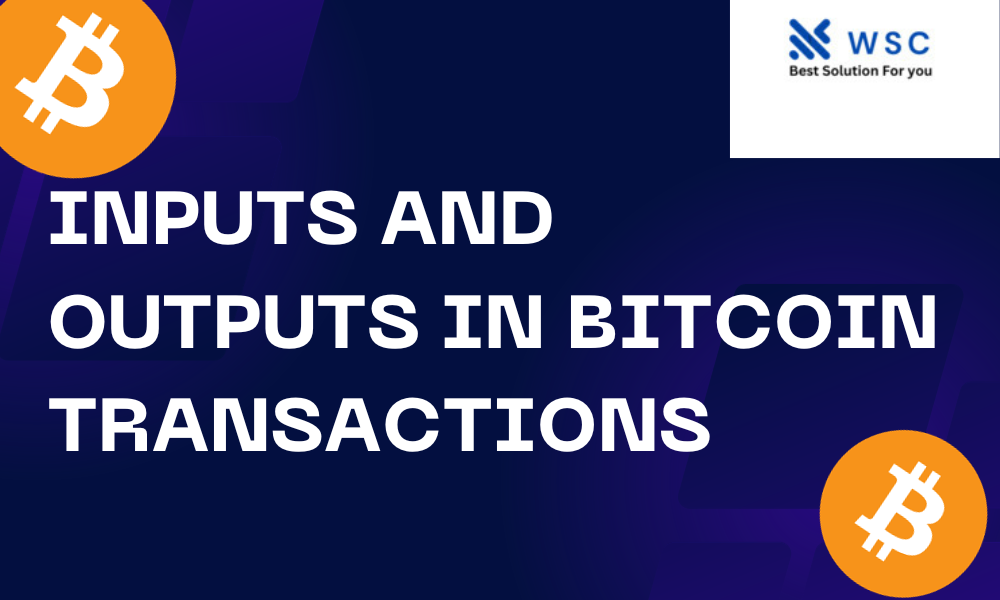In the realm of cryptocurrency, Bitcoin stands as the pioneer, a digital currency that has revolutionized the financial landscape. At the core of its functionality lie the intricate details of inputs and outputs in a Bitcoin transaction. Understanding this fundamental aspect is paramount for anyone navigating the world of cryptocurrencies. Let’s delve into the depths of these components that shape the very essence of Bitcoin transactions.
The Genesis Block: Initiating the Transaction
Inputs – The Fuel for the Bitcoin Engine
Every Bitcoin transaction begins with inputs, the building blocks that power the entire process. Inputs refer to the unspent transaction outputs (UTXOs) from previous transactions, essentially the funds available for spending. These UTXOs become the foundation, combining to form the total value being transferred in the current transaction.
UTXOs – Unveiling the Unspent
Within the realm of Bitcoin, UTXOs represent the unspent portion of cryptocurrency from prior transactions. When a user initiates a new transaction, they select specific UTXOs that align with the desired transaction value. This selection process is crucial, influencing the transaction’s size and subsequently, the associated fees.
Outputs – Mapping the Destination
Just as inputs set the stage, outputs define the destination of the cryptocurrency. Outputs represent the recipients of the Bitcoin, specifying the amount each party receives. It’s a pivotal aspect that requires precision, as any residual funds from inputs are typically returned to the sender as change.
Change Outputs – Balancing the Books
Change outputs play a vital role in maintaining accuracy and transparency within Bitcoin transactions. When the value of selected inputs exceeds the desired transaction amount, the excess returns to the sender as a change output. This process ensures that every satoshi is meticulously accounted for, enhancing the efficiency and reliability of the Bitcoin network.
The Transaction Process: A Symphony of Inputs and Outputs
Transaction Verification – Ensuring Authenticity
The Bitcoin network relies on a decentralized consensus mechanism to verify transactions. This involves confirming the legitimacy of inputs, ensuring they are indeed unspent and valid. Simultaneously, outputs are scrutinized to guarantee that the proposed transaction adheres to the established rules of the blockchain.
Script Signatures – The Security Seal
Inputs are secured through cryptographic script signatures, serving as the digital equivalent of a signature on a traditional check. These signatures authenticate the spender’s ownership of the UTXOs, providing a secure and verifiable method for validating transactions.
Fee Dynamics – Navigating the Transaction Costs
Transaction fees are an integral part of the Bitcoin ecosystem, serving as incentives for miners to process transactions promptly. The size of a transaction, influenced by the number and size of inputs and outputs, directly impacts the associated fees. Users must strike a balance between transaction speed and cost, making strategic decisions based on the dynamic fee market.
Challenges and Innovations: Evolving the Transaction Landscape
Scaling Solutions – Addressing Input and Output Bottlenecks
As the popularity of Bitcoin continues to soar, scalability becomes a pertinent issue. The transaction process, inherently linked to the number of inputs and outputs, faces challenges in terms of speed and cost. Innovative solutions, such as the Lightning Network, aim to address these bottlenecks, providing a framework for faster and more cost-effective transactions.
Lightning Network – Paving the Way for Microtransactions
The Lightning Network introduces a layer-two scaling solution, enabling off-chain transactions. By creating payment channels, users can conduct multiple transactions without burdening the main blockchain. This not only enhances scalability but also mitigates the challenges associated with input and output constraints.
Conclusion
In conclusion, understanding the intricacies of inputs and outputs in a Bitcoin transaction is paramount for anyone involved in the cryptocurrency space. As the landscape continues to evolve, innovations like the Lightning Network showcase the industry’s commitment to addressing challenges and enhancing the efficiency of transactions. Whether you’re a seasoned Bitcoin enthusiast or a newcomer exploring the possibilities, a comprehensive grasp of these fundamental elements is the key to unlocking the full potential of Bitcoin transactions.
Check our tools website Word count
Check our tools website check More tutorial




